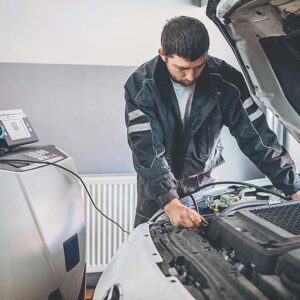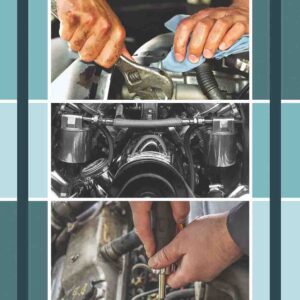Drivers need to learn a thing or two about tire inflation, according to a new tire inflation and maintenance attitudinal survey conducted by Leger on behalf of tire makers. Only 31% of drivers measure their tire pressures monthly, a practice essential to road safety, fuel economy and protecting the environment.
The poll identified glaring gaps in driver knowledge about tire inflation despite finding that proper tire inflation is important to 96% of motorists. More than two thirds (69%) of drivers still do not measure their tire pressures monthly. Among those who do not check inflation monthly: 31% believe they only need to check their tire pressure when it appears tire pressure is low. (Note: a tire can be underinflated by 20 percent or more and look normal; 23% don’t measure tire pressures monthly because their vehicle has a Tire Pressure Monitoring System (TPMS). 21% don’t know they should check their tire pressures monthly.
The survey found that many drivers (45%) do not know where to find the correct inflation pressure for their vehicle. However, 55% are aware the recommended tire pressure is listed on the vehicle placard (commonly located on the inside door post or inside the fuel door) and in the owner’s manual.
Additionally, nearly two thirds (65%) were unaware that tire pressures should only be measured when tires are cold. In fact, a vehicle should be stationary for at least three hours or not have been driven more than two kilometres prior to checking tire inflation.
A disappointing finding is that 31% say they inflate their tires to the air pressure stamped on the tire’s sidewall. This imprinted tire pressure refers to the maximum inflation pressure a tire can contain under maximum load, not the vehicle manufacturer’s recommended inflation level. Prolonged driving at this inflation pressure may result in uneven tread wear and reduced traction, particularly on wet road surfaces.
The poll also suggests that drivers may be too reliant on visual inspections and TPMS systems. Nearly three quarters (72%) cite “tires look low” as a reason for measuring their tire inflation levels, and 32% say “the appearance of a warning light” is a factor that motivates them to check tire pressures.
Good news emerging from the study is that 69% of drivers use a personal air pressure gauge when measuring tire pressures. As well, 78% report they rotated their tires in the past year and 56% had their vehicle’stire alignment checked in the past 12 months.
“These findings should be a wake-up call to motorists,” says Glenn Maidment, president of The Rubber Association of Canada, which represents tire makers. “Drivers can guarantee optimal tire performance, lower their fuel bills and protect the environment simply by learning a few tire inflation facts and measuring air pressures monthly to ensure their tires are inflated to the vehicle manufacturer’s recommended level.”
Fuel economy, environmental benefits
Measuring tire pressures monthly can result in considerable cost savings. A motorist riding on under inflated tires who drives 20,000 kilometres per year can save at least $100 per year. Those who drive longer distances can save much more.
The environmental benefits of proper tire inflation are also significant. Drivers operating their vehicles on under inflated tires are expected to waste more than 500 million litres of fuel in 2014, enough to power 275,000 vehicles for a full year. This unnecessary fuel consumption will release an additional 1.2 million tonnes of carbon dioxide into the atmosphere.
The poll also found that, despite today’s high fuel prices, 81% of drivers are unfamiliar with low rolling resistance (LRR) tires. These advanced technology tires, which are designed and constructed for fuel efficiency, save at the pumps because they roll more smoothly and thereby require less energy to push them down the road.
Tire makers report that LRR tires can cut fuel costs by as much as 4.5%. The average motorist using these advanced technology tires can expect to save hundreds of dollars over the lifetime of using these tires.
Nearly two thirds of those polled (61%) expressed interest in acquiring LLR tires. Ninety-two% were motivated by improved fuel economy and 44% wanted to protect the environment through lower vehicle emissions.
May 12 to 18, 2014, is National Be Tire Smart Week, during which the tire industry will be reminding motorists about the fuel efficiency, safety and environmental benefits of proper tire inflation and maintenance.
You can learn more by visiting www.betiresmart.ca.








